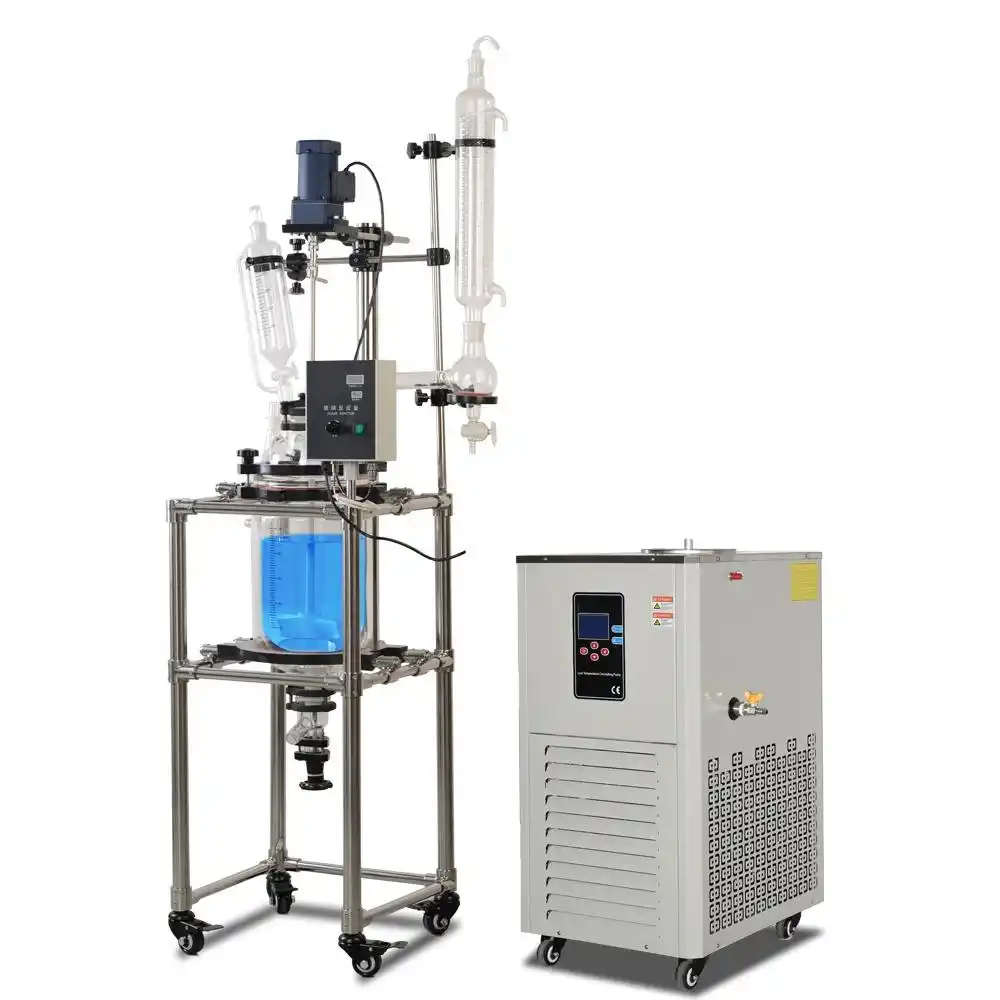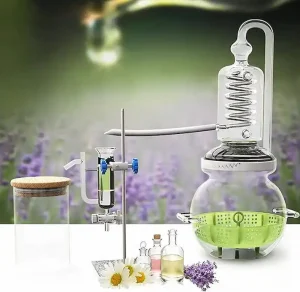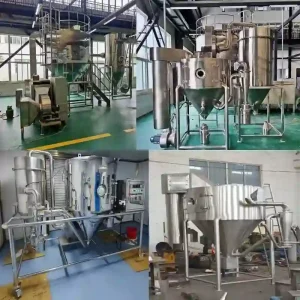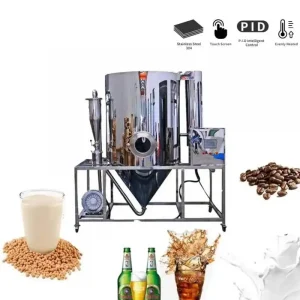In today’s rapidly advancing scientific landscape, glass reactors, also referred to as chemical reactors, play a pivotal role in a multitude of industries, serving as indispensable tools that empower scientists and researchers to meticulously conduct intricate chemical processes with unparalleled precision and control. The selection of an optimal glass reactor from an expansive array of available options, including glass reactor vessels, jacketed glass reactors, glass-lined reactors, and various other specialized configurations, emerges as a decision of paramount significance, one that can profoundly influence the outcome and success of your experiments and projects.
This comprehensive guide is designed to be your compass, skillfully navigating through the crucial considerations that should guide your selection process, ensuring that you make an informed and astute choice when procuring a glass reactor that seamlessly aligns with your specific and unique requirements.

Introduction
Within the dynamic and vibrant realm of chemical and pharmaceutical laboratories, glass reactors stand as stalwart companions, granting scientists, chemists, and researchers the means to exercise meticulous control over a plethora of reactions and processes. Irrespective of whether you are an experienced and seasoned researcher, or a neophyte scientist just embarking on a scientific journey, the process of handpicking the ideal glass reactor assumes monumental significance, representing a defining factor that ultimately determines the accuracy of your results and, above all, ensures the paramount importance of safety.
Understanding Glass Reactors
Glass reactors, like a spectrum of multifaceted gems, come in an assortment of types and configurations, each exquisitely tailored to fulfill specific purposes and applications, exemplifying the depth of their versatility and utility. Among the tapestry of options are single-glass reactors, double-layer reactors, and the intricate symphony of three-layer reactors, each finding its own cherished place in the tapestry of industries, ranging from the pharmaceutical and petrochemical realms to the captivating world of cosmetics.
Exploring Different Types of Glass Reactors
- Single-Glass Reactors: These reactors stand as the quintessential workhorses, perfectly suited for basic reactions and the rhythmic cadence of routine experiments. Their allure lies in their simplicity and user-friendly nature, offering a gateway for scientists to engage with the captivating dance of chemistry.
- Double-Layer Reactors: The stage upon which more complex chemical waltzes are orchestrated, double-layer reactors emerge as the paragons of resilience, embracing enhanced heat and pressure resistance. This expanded capacity ushers in a wider spectrum of possibilities, enabling a symphony of processes that elevate scientific exploration to new crescendos.
- Jacketed Glass Reactors: The masterful addition of an extra layer renders jacketed reactors as the maestros of temperature control. These reactors become the canvas for reactions where the interplay of external factors is akin to the finest brushstrokes on an artist’s masterpiece.
- Glass-Lined Reactors: In a harmonious marriage between the ethereal allure of glass and the fortitude of enhanced durability, glass-lined reactors materialize as the perfect conduits for processes that involve the tempestuous embrace of corrosive substances.
- Continuous Stirred Tank Reactors (CSTRs): The narrative of continuous processing finds its embodiment in CSTRs, their versatility becoming the cornerstone of myriad industries, from the steadfast realm of pharmaceuticals to the labyrinthine passages of petrochemicals.
Applications of Glass Reactors
The symphony of glass reactors resonates across a vast expanse of industries, painting vivid strokes of impact and contribution:
Pharmaceuticals: Within the hallowed halls of pharmaceutical synthesis, glass reactors emerge as the alchemical cauldrons where the ingredients of tomorrow’s medicines meld and morph.
Chemicals: A kinetic canvas for the creation of specialty chemicals and compounds, glass reactors infuse innovation into the very building blocks of industry.
Petrochemicals: Within the sprawling tapestry of petrochemical refinement and processing, glass reactors stand as sentinels of transformation, orchestrating the metamorphosis of raw materials into industrial symphonies.
Food and Beverage: The gustatory delights that grace our tables owe a debt to glass reactors, which serve as crucibles of flavor and fragrance synthesis, imbuing the food industry with its distinctive allure.
Factors to Consider When Choosing a Glass Reactor
The process of selecting the perfect glass reactor is a tapestry woven from a myriad of vital threads, each contributing to the grandeur of the final masterpiece:
Reactor Size and Capacity
Just as a conductor selects the perfect orchestra for a composition, you must choose a reactor size that harmonizes with your envisioned batch size, ensuring that reactions unfold with graceful efficiency and meticulous control.
Temperature and Pressure Considerations
Within the delicate choreography of chemistry, different reactions demand bespoke temperature and pressure conditions. The glass reactor that earns your favor must stand as a stalwart guardian, unwavering in its ability to withstand the tempestuous demands of your processes.
Reactor Configuration and Design
The architectural design of your chosen reactor stands as a testament to both practicality and purpose. A vertical or horizontal orientation, akin to the brushstrokes on a canvas, should seamlessly merge with your workspace and process prerequisites, culminating in a design that harmoniously marries functionality with ease of monitoring and sampling.
Material Composition: The Importance of Borosilicate Glass
A thread of utmost significance weaves through the fabric of your chosen reactor – the material composition. In this grand tapestry, borosilicate glass emerges as a shining beacon, celebrated for its unparalleled resistance to the capricious embrace of thermal shock and the relentless gnaw of chemical corrosion.
Efficient Stirring Mechanisms
Within the crucible of a glass reactor, the choreography of molecules demands the presence of adept and adjustable stirring mechanisms. These molecular dance partners ensure that reaction homogeneity is upheld, resulting in a symphony of optimization and finesse.
Safety Features for Smooth Operations
As you embark upon your scientific odyssey, safety stands as an unwavering sentinel, steadfast in its duty. Your chosen reactor should be endowed with an array of safety features, including but not limited to the vigilant guardianship of pressure relief valves, the discerning gaze of temperature sensors, and the resolute armor of anti-corrosion coatings.
Exploring Various Glass Reactor Models
Jacketed Glass Reactors: Adding an Extra Layer of Control
The jacketed glass reactor unfurls its petals to reveal an extra layer of sophistication – an outer embrace that bestows the gift of temperature control. It is within the gentle cradle of this additional layer that reactions influenced by external forces unfurl with a grace and precision akin to the gentle ballet of nature.
Laboratory Glass Reactors: Enhancing Precision in Research
In the heart of laboratories, where precision is an exquisite demand and scalability an unwavering dream, laboratory glass reactors step onto the stage. Their magnetic allure lies in the dance of control they offer, a symphony that culminates in research and development endeavors of unparalleled significance.
Industrial Glass Reactors: Scaling Up Your Processes
As scientific ambitions swell and aspirations take flight, industrial glass reactors emerge as the stately vessels that honor the demands of large-scale operations. Their embrace extends to high-pressure scenarios and the complexities of reactions that underpin the very edifice of industrial processes.
Comparing Benchtop and Industrial Glass Reactors
Pros and Cons of Benchtop Reactors
Pros:
Compact and Portable: Akin to a nomad’s abode, benchtop reactors are imbued with the essence of portability, seamlessly adapting to the shifting landscapes of scientific exploration. Small-Scale Marvels: As champions of small-scale reactions, these reactors unfurl a realm of possibilities, where every droplet of reagent resonates with significance.
Cons:
Capacity Constraints: The symphony of benchtop reactors is bound by the constraints of capacity, rendering them less amenable to the grandiose operas of larger reactions. Pressure Quandaries: In the realm of high-pressure reactions, the benchtop reactor may sing a hesitant note, its capabilities tempered by the demands of pressure.
Pros and Cons of Industrial Reactors
Pros:
Capacity Beyond Measure: Within the cavernous heart of industrial reactors lies a capacity beyond measure, where reactions of titanic proportions gracefully unfold. High-Pressure Epics: The industrial reactor is a titan of resilience, standing unflinching in the face of high-pressure scenarios and complex reactions that dance on the precipice of chaos.
Cons:
Space Necessity: The industrial reactor commands space with an authoritative presence, necessitating a dedicated enclave within the symphony of your laboratory. The Price of Grandeur: With grandeur comes a toll – the initial investment for industrial reactors echoes with weight, a testament to the symphony of capabilities they bring forth.
Budgetary Planning: Balancing Costs and Benefits
As you embark upon the quest to unearth the perfect glass reactor, the orchestra of your decisions must harmonize with the cadence of budgetary considerations, a delicate dance between costs and benefits:
Initial Investment
The industrial reactor beckons with its aura of grandeur, yet the path to its embrace demands a weightier purse. Benchtop reactors, on the other hand, offer a more modest entry, welcoming all who seek their compact embrace.
Operating Costs
Beyond the initial investment lies the symphony of operating costs, an orchestration that involves the players of energy consumption, maintenance, and the procurement of spare parts. Industrial reactors, as the maestros of magnitude, tend to cast a wider shadow on this stage, demanding more resources to sustain their crescendo.
Maintenance and Support: Ensuring Longevity and Reliability
In the sprawling tapestry of scientific exploration, the quest for longevity and reliability is an unwavering pursuit, guided by the principles of meticulous maintenance and the availability of a lifeline to spare parts. As you tread the path of reactor selection, a cornerstone of your choice should be a manufacturer that reverberates with the echoes of robust technical support, a compass to guide you through the labyrinth of maintenance.
Cleaning and Maintenance of Glass Reactors
The alchemy of prolonging the life of your glass reactor is a dance that necessitates discipline, a harmonious choreography of cleaning and maintenance that unfurls beneath the watchful gaze of manufacturer guidelines:
Regular Cleaning: The heart of the matter lies in regular cleaning, a ritualistic act that sweeps away the remnants of reactions past, bestowing upon your reactor the purity of a pristine canvas.
Inspection: As the seasons of scientific exploration unfurl, a periodic inspection becomes a beacon of foresight, detecting the faintest traces of wear and tear that may seek to mar the harmony of your reactor.
Compatibility: The molecules that whirl within the cauldron of your reactor weave intricate tales of compatibility. Ensure that the chemicals and materials that grace this stage are in perfect concord with the soul of your glass reactor, preventing the discord of corrosion from tainting the symphony.
Access to Spare Parts and Technical Support
In the grand tapestry of scientific equipment, the availability of spare parts and the refuge of technical support stand as pillars of assurance, a comforting assurance that you are never alone in the face of challenges:
The Quest for Spare Parts: The journey to sustain your reactor’s performance is an endeavor that hinges upon the availability of genuine spare parts, ensuring that the heart of your glass reactor beats with an unwavering rhythm.
The Haven of Technical Support: As scientific explorations cascade into uncharted waters, the beacon of technical support shines as a lighthouse, guiding you through storms of uncertainty and challenges unknown.
Real-Life Applications: Success Stories Utilizing Glass Reactors
The annals of scientific history reverberate with tales of triumph, stories that unfurl the flag of success, fluttering proudly in the winds of innovation. Let us delve into a mosaic of real-life applications, where glass reactors have served as the unassuming protagonists:
From Pharmaceuticals to the Cosmos: Within the hallowed halls of pharmaceutical synthesis, glass reactors have scripted the synthesis of life-changing medications, casting ripples of health and well-being across the world. In the realm of cosmic exploration, these reactors have stood as guardians of innovation, ushering in new frontiers in our understanding of the universe.
Chemical Alchemy and the Art of Perfumery: The realm of chemistry finds a symphony of expression within the heart of glass reactors, where the alchemy of compounds unfolds, birthing a kaleidoscope of specialty chemicals. In the intoxicating world of perfumery, these reactors dance to a different tune, weaving fragrant dreams that grace our senses.
Petrochemical Transformations and Gastronomic Delights: The journey of petroleum finds a steadfast companion in glass reactors, where the orchestration of refinement and processing takes center stage. And within the tapestry of our culinary desires, these reactors partake in a gastronomic ballet, synthesizing flavors and fragrances that elevate dining to an art form.
Extending Lifespan: Tips for Prolonging the Life of Your Glass Reactor
Within the symphony of science, the longevity of your glass reactor becomes a cornerstone, an endeavor that hinges upon a symphony of principles and practices:
The Overture of Adherence: As you embark upon each reaction, ensure that the stage is set to adhere to the recommended operating conditions, a prelude to longevity and enduring performance.
The Ballet of Cleaning and Inspection: Regularly engage in the delicate ballet of cleaning and inspection, a choreography that sweeps away the vestiges of reactions past and unfurls the canvas for future scientific masterpieces.
The Chemistry of Compatibility: Within the crucible of your glass reactor, the chemistry of compatibility extends beyond the realm of molecules. Choose chemicals and materials that resonate with harmony, preventing the corrosive discord that seeks to mar the beauty of your instrument.
Conclusion
In the labyrinthine corridors of scientific exploration, the selection of the right glass reactor assumes the stature of an odyssey, an endeavor that necessitates the alignment of process requisites, safety considerations, and budgetary constraints. By donning the mantle of understanding, embracing the myriad forms and functions, and allowing the compass of essential factors to guide your journey, you embark upon a quest that culminates in the acquisition of a glass reactor, an alchemical treasure that becomes an enduring companion in your scientific odyssey.
FAQs: Clearing Common Queries
FAQs: Clearing Common Queries
What Are the Key Functions of a Glass Reactor in Chemical Processes? A glass reactor is the maestro of controlled chemical symphonies, orchestrating reactions under precise conditions, where the overture of various compounds and materials takes center stage.
How Does a Jacketed Glass Reactor Differ from Other Models? The jacketed glass reactor is a harmonious marriage between form and function, incorporating an additional layer for temperature control. This feature grants it the ability to conduct reactions that are gracefully influenced by the nuances of external factors.
What Industries Typically Use Glass Reactors for Their Operations? The stage upon which glass reactors perform spans a rich tapestry of industries, encompassing pharmaceuticals, chemicals, petrochemicals, and the enchanting realms of food production. Each application bestows upon these reactors a unique role in diverse manufacturing processes.
What Safety Measures Should You Consider When Using a Glass Reactor? Safety assumes a paramount role within the narrative of glass reactor utilization. Prioritize your well-being by selecting a reactor that boasts an arsenal of safety features, including pressure relief valves, temperature sensors, and the resilient embrace of corrosion-resistant materials.
Where Can You Find Reliable Manufacturers and Suppliers of Glass Reactors? The journey to uncover reliable manufacturers and suppliers unfurls through the realm of reputable laboratory equipment purveyors and manufacturers, each possessing the potential to connect you with high-quality glass reactors tailored to your unique needs.
In the grand tapestry of scientific exploration, the glass reactor emerges as a steadfast companion, a conductor of controlled chemical symphonies, and a vessel that channels the currents of innovation. As you traverse the intricate corridors of selection, remember that your choice is more than an acquisition; it is a transformative chapter in your scientific narrative, an investment that echoes through the annals of discovery and experimentation.
View more about Batch Reactor on Wikipedia





